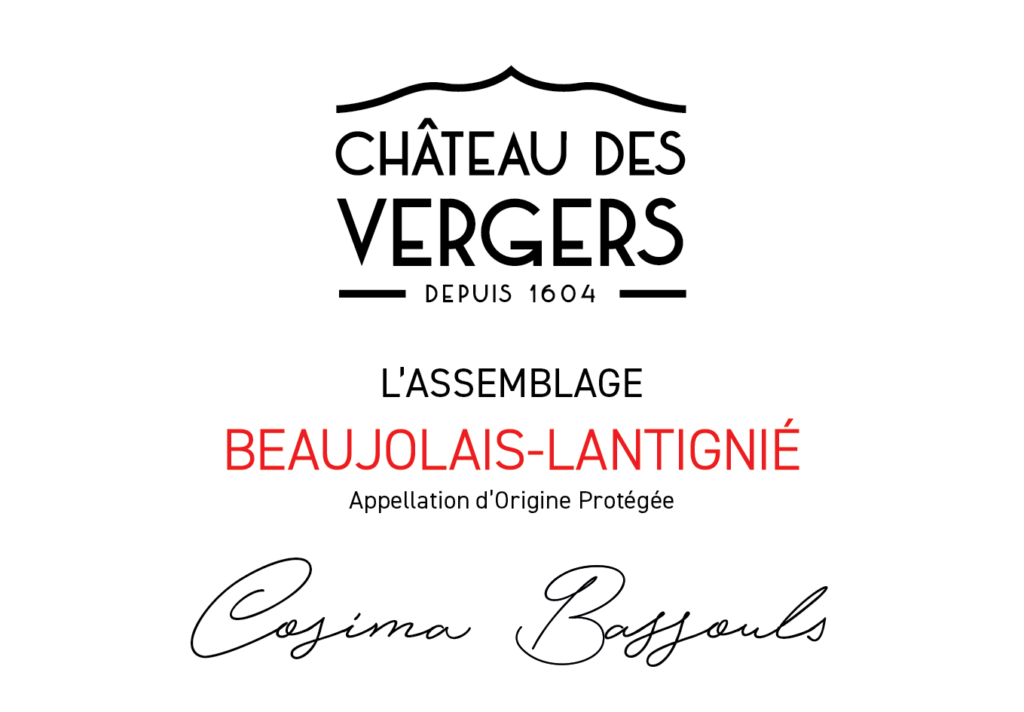Château des Vergers
Beaujolais-Lantignié L’Assemblage 2020
Château des Vergers Beaujolais-Lantignié L’Assemblage 2020
Cosima Bassouls is a young, charismatic leader of the bucolic Beaujolais-Lantignié region. Cosima has a vision for Lantignié, and it involves combining the strengths of the region’s long viticultural tradition with her progressive and innovative environmental plan. She began the conversion of all 6ha of family vineyards to organic farming in 2019, utilizing agroforestry and cover crops to create an integrated landscape that brings nature into the vineyards. She utilizes 15 different cover crops, rotating and adapting each to suit the needs of the parcel, which creates natural biodiversity and a true polyculture with healthy, living soil, which also counteracts erosion.
Cosima’s L’Assemblage cuvée shows off the diversity of the Lantignié terroir, which has gamay vineyards planted between 250m – 350m elevation. The vineyards surrounding the ancient Château des Vergers are very diverse, with creeks, trees, bushes, and lots of small hills and valleys, where grapes co-exist with the natural environment. 30-to-70-year-old gamay vines are planted on shallow, rocky pierres bleues (blueschist) soils, where the vines have direct access to the bedrock, as well as on pink granite, which are separated by a small river that runs through the landscape. Cuvée L’Assemblage is a full, structured wine with spicy, forest floor aromatics, earthy minerality, excellent acidity, and the firm tannins of a fine Cru Beaujolais built to age.
Vinification – Whole bunches are handpicked in small crates and selected in the vineyard. 18 days of whole-cluster, semi-carbonic maceration is followed by a very gentle and slow pressing using the château’s centuries-old vertical press. The press requires an entire team to turn each hour, with the full pressing taking 24 hours to complete, following the moon cycle. The ancient press yields a naturally clear must that does not need to be filtered or clarified. The must is then transferred into two-to-five-year-old used French barrels of various sizes, where fermentation continues spontaneously with native yeasts. After racking off the gross lees, the wine spends an additional 11 months in the same barrels before being bottled unfined and unfiltered. Sulfur is not used in the vinification process; a small amount is added at bottling.


